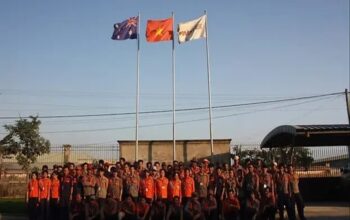The AI.SEETM Line Inspector modules, which are smart cameras and AI evaluation tools installed directly on the assembly line and controlled by the Core, are part of the artificial intelligence-based visual quality control and defect detection system for manufacturers. At the assembly line, incoming photos are assessed, and subsequent procedures are managed.
Challenges in Quality Assurance
Modern manufacturing facilities are intended to be extremely productive, flexible at the highest level of quality, economical, and problem-free.
Manual visual inspection procedures and other traditional quality inspection methods are frequently unreliable, pricey, have a low detection rate, and are challenging to scale.
Reliable Solutions for Quality Assurance with Automated Optical Inspection (AOI)
Modern technology offers fresh approaches to quality control. An automated visual inspection technique called automated optical inspection (AOI) monitors the assembly line for defects and failures in products. Automated optical inspection (AOI) using camera systems has mostly replaced or supplemented the common visual inspection carried out by an employee’s sight. These automated visual inspection methods evaluate parts throughout the assembly line precisely, quickly, and without gaps, which makes the technology more dependable and effective than the human eye.
The AI.SEETM equipment gives manufacturers the ability to undertake a non-destructive, dependable, and automated visual inspection of their products by utilizing the potential of artificial intelligence.
While maintaining and enhancing the dependable quality and operational efficiency, AOI may discover even the smallest imperfections on heterogeneous or shiny surfaces that a visual examination by humans frequently overlooks.
Therefore, producers may inspect products with great accuracy and improve production quality by employing automated visual inspection systems. Visual inspection automation speeds up production and cuts down on manual inspection time, increasing efficiency. An automated visual inspection can cut manufacturing costs and increase profitability by boosting productivity and lowering faults. Additionally, an automated optical inspection system can offer useful information about the caliber of the produced goods and the manufacturing procedures that can be applied to ongoing improvement.
AI.SEE™ Product components
AI.SEE™ Line Inspector
The AI.SEETM suite includes the Line Inspector by AI.SEETM. On the assembly line, the equipment is placed and either provides its own cameras or interfaces with already-existing cameras. It locally analyses the camera images and manages the subsequent procedure.
AI.SEE™ Core
You may gather and handle massive amounts of data and images for quality control using AI.SEETM Core. The AI-assisted, self-learning, neural network-based error-detection algorithm is automatically trained by AI.SEETM, increasing its accuracy with each new image.
Features
Annotation and Management of Image Data
Individual photos can be carefully reviewed, annotated, and given defect classes using AI.SEETM Control. In order to use photos for the training and reteaching of various deep-learning models, photographs can also be maintained in sets and assigned to projects.
Management of Projects and User Rights
The AI.SEETM project database allows for the management and analysis of specific projects.
Additionally, each user’s personalized access to the features, initiatives, and components of AI.SEETM can be specified.
Training, Deployment, and Evaluation of Neural Networks
In the background, AI.SEETM trains neural networks for mistake detection. If flaws or components change, AI.SEETM Control will be able to adjust and allow for a smooth transition between various product groups. Within the system, neural networks are taught, used, and assessed.
Dashboard and Data Analysis
You may handle photos, failure classes, training data, and results in well-structured dashboards using AI.SEETM platform. For instance, data and trends might reveal early signs of industrial equipment wear and tear.
Interfaces for Different Imaging Systems
Elunic offers its own camera and lighting system with AI.SEETM Lens while also making it possible for seamless interaction with current systems.
Interface for Deployment of Own Architectures and Models
Any neural network architecture can be employed because machine learning technology is developing so quickly. Their deployment can be accomplished using straightforward AI.SEETM Engine interface implementation.
Interfaces for System Integration in MES/QMS/
A precise allocation to each manufacturing item is necessary to enable continuous output in a big factory. If such manufactured items don’t match the standards for quality, marking is also required.
Rule-Based Computer Vision vs. Deep Learning
Conventional AOI test systems solely utilize rule-based computer vision to identify images based on rigid rules for the recognition of lines and forms.
In contrast, AI.SEETM uses machine learning models that, employing cutting-edge artificial neural networks through deep learning, learn the relationships between the most complex and diverse data sets in real time. Superior quality is offered as a result of these improved adaptabilities, which also boost the efficiency of production machinery.
Click on the following link Metrologically Speaking to read more such blogs about the Metrology Industry.









